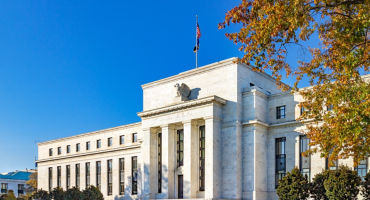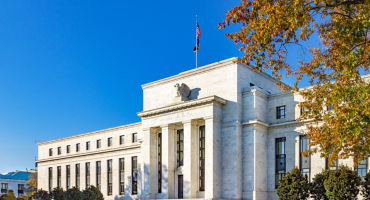- Multi-Asset Strategist
Skip to main content
- Funds
- Insights
- Capabilities
- About Us
- My Account
United States, Institutional
Changechevron_rightThank you for your registration
You will shortly receive an email with your unique link to our preference center.
The views expressed are those of the author at the time of writing. Other teams may hold different views and make different investment decisions. The value of your investment may become worth more or less than at the time of original investment. While any third-party data used is considered reliable, its accuracy is not guaranteed. For professional, institutional, or accredited investors only.
Tariffs exceeded market expectations. Now what? Expect short-term volatility, identify concentrations, and consider using sell-offs as an entry point to diversify across regions and styles.
Overall, tariffs announced by the US administration on April 2 far exceeded market expectations. This is because while universal tariffs of 10% were lower than expected, “reciprocal tariffs,” especially in Asia, were higher than expected. China, Vietnam, India, Thailand, and Taiwan were particularly hard hit by reciprocal tariffs, with China's effective rate now sitting at 54% given an imposition of 20% earlier this year.
The US is likely to see lower growth and higher inflation. As a result, the risk of a recession in the US is higher — I currently place it at a 50% probability — with the fallout affecting other economies across the globe to a varying degree. In the event that unemployment rates in the US rise, the US Federal Reserve (Fed) does have room to lower interest rates from its current rate of 4.5% but higher potential inflation will act as a constraint.
Other developed markets, most notably Europe and Japan, look increasingly attractive. While the US faces fiscal contraction, Europe is moving toward fiscal expansion — especially following recent policy shifts in Germany — with Japan also benefiting from fairly accommodative policy. Both regions offer relatively cheaper valuations than the US. Further declines in the US dollar would be a tailwind for the rotation into non-US developed markets.
Review portfolios and identify concentrations – many portfolios are still quite concentrated in US and growth, yet the opportunity set may now be much more broad-based.
Clarify investment horizon and risk tolerance – longer investment horizons and a tolerance for risk give many investors more flexibility to use volatility as an opportunity. It may make sense even for investors with shorter time horizons to ride out the storm and avoid crystalizing losses that may get smoothed out over time.
Make a plan – not doing anything is a decision. It’s better to set a plan to become more diversified across regions and styles. With a longer horizon of a over a year, consider using sell-offs as good entry points to get those exposures.
Avoid negativity – there are potential mitigating factors in the current environment, including:
Don’t lose sight of the relative winners – while US tariffs are a clear negative for the world economy, they may ultimately hasten a rebalancing of capital flows away from the US. If this were to materialize, we could see relative outperformance of European asset markets, given European policymaker efforts to ramp up structural spending in areas such as defense, infrastructure, and digitization. This period could also be a catalyst for European policymakers to accelerate their competitiveness and economic policy agenda, as outlined in the Draghi report.1 In addition, economies with policy flexibility will be able to cushion the adverse effects of tariffs.
Markets will remain volatile, so investors should expect continued whipsaw behavior, including the risk of further losses that might spread beyond equity markets.
While the administration hasn’t left much time for negotiation, countries around the world will be evaluating whether they negotiate or retaliate — potentially either mitigating or exacerbating damage to the US and global growth and inflation outlook.
While we would caution against major portfolio adjustments at this stage, we will be monitoring these developments closely, looking for attractive entry points that may emerge.
1 Mario Draghi, The Draghi report on EU competitiveness, European Commission, September 2024.
Expert

FOMC: Easing into uncertainty
Continue readingPrivate credit outlook for 2026: 5 key trends
Continue readingThe rising tide of AI: How it could lift US productivity, growth, and profits
Continue readingAre hedge funds the missing ingredient?
Continue readingRapid Fire Questions with Ross Dilkes
Continue readingInvesting in 2026: prepare for inflationary growth
Continue readingURL References
Related Insights
Stay up to date with the latest market insights and our point of view.
Thank you for your registration
You will shortly receive an email with your unique link to our preference center

FOMC: Easing into uncertainty
Fixed Income Portfolio Manager Jeremy Forster profiles the Fed's December rate cut, labor market trends, inflation pressures, and the role of anticipated changes to FOMC leaders in 2026.

Private credit outlook for 2026: 5 key trends
Our private credit experts discuss five themes driving the asset class’s 2026 outlook, including public/private convergence, changing credit profiles, the growth of retail, and much more.

The rising tide of AI: How it could lift US productivity, growth, and profits
From an economic and market standpoint, a lot is riding on the future of artificial intelligence. Macro Strategist Juhi Dhawan sees plenty of reasons for excitement but also a need for patience along the way.

Are hedge funds the missing ingredient?
Inflation, volatility, and valuations — they all raise questions about portfolio diversification and resilience. Multi-Asset Strategists Nanette Abuhoff Jacobson and Adam Berger explain why multi-strategy and equity long/short hedge funds could provide the answers. They offer insights on adding allocations to a traditional portfolio mix and a recipe for manager selection.

Monthly Market Review — October 2025
A monthly update on equity, fixed income, currency, and commodity markets.

Rapid Fire Questions with Ross Dilkes
In this edition of “Rapid Fire Questions,” fixed income portfolio manager Ross Dilkes shares his views on the Asia credit market—covering the macro outlook, China’s momentum, the most compelling opportunities across the region, and key risks shaping the next 12 months.

Investing in 2026: prepare for inflationary growth
Macro Strategists John Butler and Eoin O'Callaghan share their annual macro outlook and discuss likely implications for markets and investors. They outline four potential scenarios graded by level of probability.

Is all that glitters still gold?
Gold has delivered impressive gains thus far in 2025, but what does that say about market risks and the recent strong returns of stocks? Multi-Asset Strategist Nanette Abuhoff Jacobson offers her take on the precious metal and the case for diversification in today’s market.

Questioning US credit quality
Fixed income strategist Amar Reganti examines questions surrounding US creditworthiness.
By

Chart in Focus: Is the Fed rate cut positive for risk?
In this edition of Chart in Focus, we examine how the Fed’s long-awaited interest rate cut may influence risk assets.

Chart in Focus: Three reasons to keep the faith in US credit quality
Our fixed income experts highlight the resilience of US institutional credibility.
URL References
Related Insights
© Copyright 2025 Wellington Management Company LLP. All rights reserved. WELLINGTON MANAGEMENT ® is a registered service mark of Wellington Group Holdings LLP. For institutional or professional investors only.
Enjoying this content?
Get similar insights delivered straight to your inbox. Simply choose what you’re interested in and we’ll bring you our best research and market perspectives.
Thank you for joining our email preference center.
You’ll soon receive an email with a link to access and update your preferences.
Monthly Market Review — October 2025
Continue readingBy